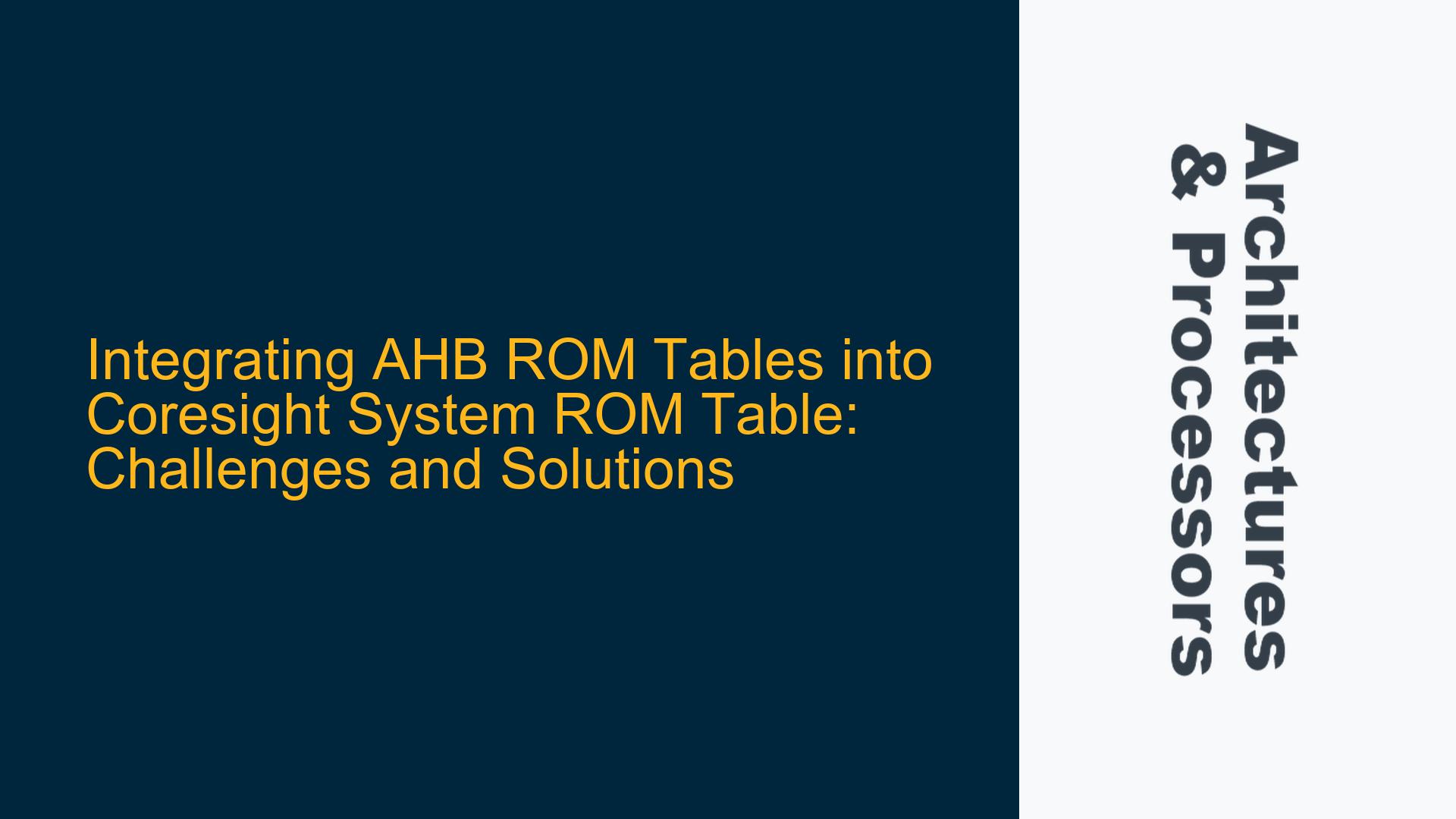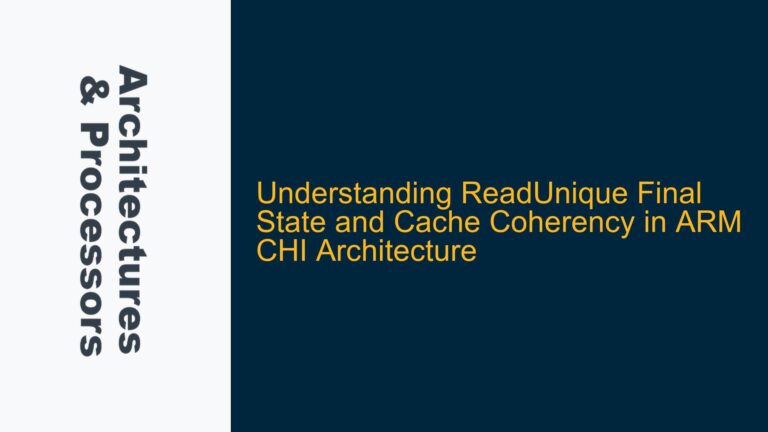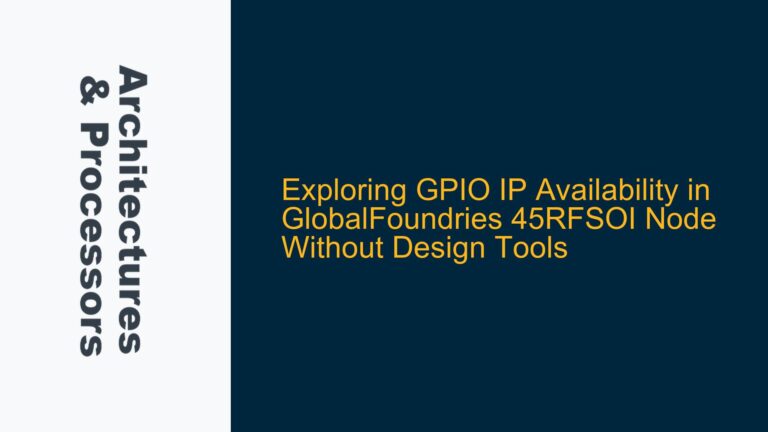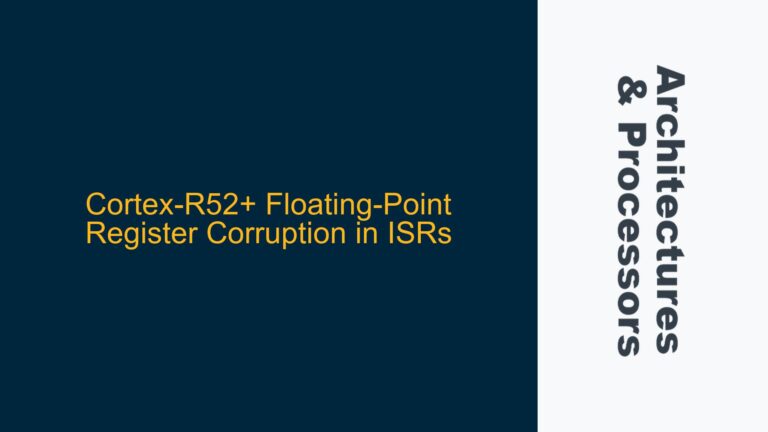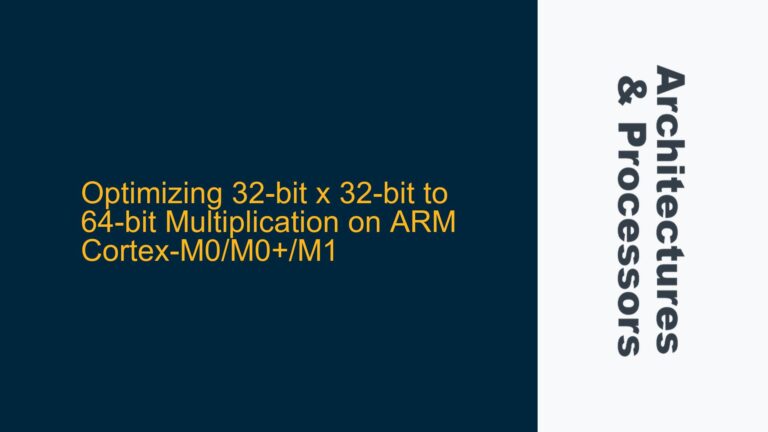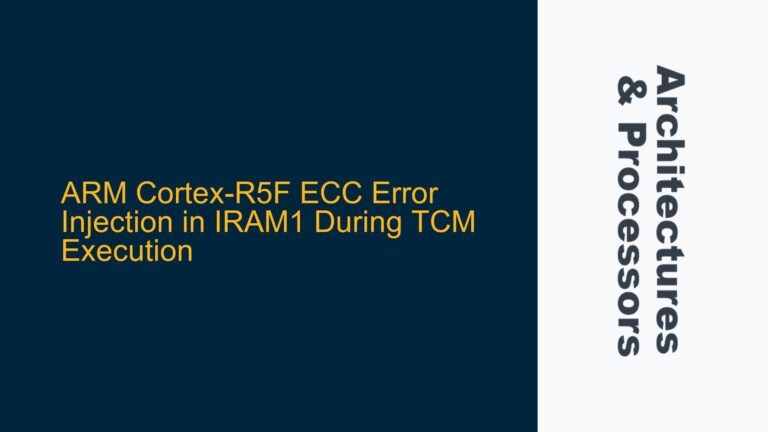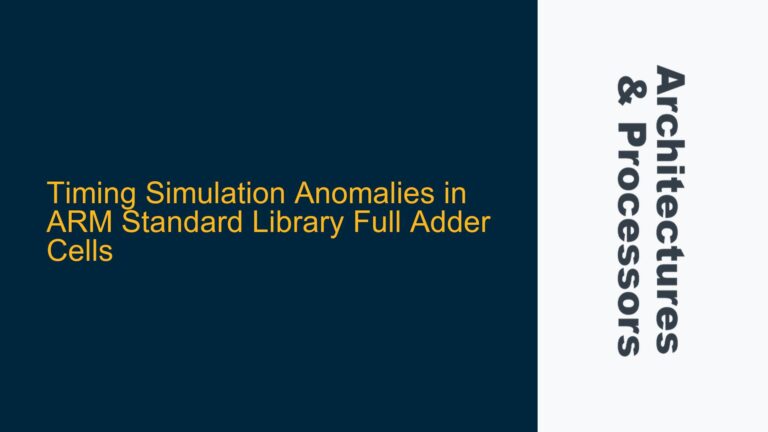ARM Coresight Architecture: ROM Table Integration Complexity
The integration of AHB ROM tables into the Coresight system ROM table presents a multifaceted challenge in ARM-based SoC designs. The Coresight architecture, a critical component for debugging and tracing, relies on a hierarchical system of ROM tables to identify and access various debug components. These ROM tables serve as directories, pointing to the memory-mapped locations of debug components such as Embedded Trace Macrocell (ETM), Instrumentation Trace Macrocell (ITM), and other trace and debug elements.
The primary issue arises when attempting to include AHB ROM tables within the system ROM table. The Coresight architecture traditionally uses APB-AP (Advanced Peripheral Bus Access Port) ROM tables, which are designed to work seamlessly within the APB bus framework. However, AHB (Advanced High-performance Bus) ROM tables operate under a different protocol, which introduces complexities in integration. The AHB protocol, being a higher-performance bus compared to APB, has different timing characteristics, data transfer mechanisms, and addressing schemes. This discrepancy can lead to synchronization issues, addressing conflicts, and potential data corruption if not handled correctly.
The challenge is further compounded by the need to maintain a unified view of all debug components across the SoC. The system ROM table must provide a coherent and consistent interface to the debug tools, regardless of whether the components are accessed via APB or AHB. This requires careful consideration of the addressing scheme, ensuring that there are no overlaps or conflicts between the APB and AHB address spaces. Additionally, the timing characteristics of both buses must be aligned to prevent any race conditions or data integrity issues during debug operations.
Protocol Mismatch and Addressing Conflicts
The core of the problem lies in the inherent differences between the AHB and APB protocols. The AHB protocol is designed for high-performance data transfers, supporting features such as burst transfers, split transactions, and multiple outstanding transactions. In contrast, the APB protocol is simpler, optimized for low-power, low-bandwidth peripheral access. These differences manifest in several ways when integrating AHB ROM tables into the system ROM table.
One of the primary issues is the addressing scheme. The AHB bus typically uses a 32-bit address space, which can overlap with the address space used by the APB bus. This overlap can lead to conflicts when the system ROM table attempts to access components via both buses simultaneously. For example, if a debug tool requests access to a component via the APB bus, but the component is actually located on the AHB bus, the system ROM table must correctly route the request to the appropriate bus. This requires a sophisticated address decoding mechanism that can distinguish between APB and AHB addresses and route the requests accordingly.
Another significant issue is the timing mismatch between the two buses. The AHB bus operates at a higher clock frequency compared to the APB bus, which can lead to synchronization issues. For instance, if a debug tool initiates a read operation via the APB bus, but the target component is on the AHB bus, the system must ensure that the data is correctly synchronized between the two buses. This requires the implementation of synchronization mechanisms such as FIFOs or handshake signals to ensure that data is transferred correctly without any loss or corruption.
Furthermore, the AHB protocol’s support for burst transfers and multiple outstanding transactions can complicate the integration. The system ROM table must be able to handle these advanced features while maintaining compatibility with the simpler APB protocol. This requires careful design of the bus interface logic to ensure that AHB transactions are correctly translated into APB transactions and vice versa.
Implementing a Unified ROM Table with AHB and APB Integration
To address the challenges of integrating AHB ROM tables into the Coresight system ROM table, a comprehensive approach is required. This approach involves several key steps, including address space management, synchronization mechanisms, and protocol translation.
The first step is to design a robust address decoding mechanism that can distinguish between APB and AHB addresses. This can be achieved by partitioning the address space into distinct regions for APB and AHB components. For example, the lower 16MB of the address space could be reserved for APB components, while the upper 16MB could be allocated to AHB components. This partitioning ensures that there are no address conflicts between the two buses. Additionally, the address decoding logic must be designed to handle the different addressing schemes used by APB and AHB. For instance, AHB addresses may include additional bits for burst transfers or other advanced features, which must be correctly interpreted by the address decoding logic.
The next step is to implement synchronization mechanisms to handle the timing differences between the APB and AHB buses. One approach is to use FIFOs to buffer data transfers between the two buses. For example, when a debug tool initiates a read operation via the APB bus, the data from the AHB bus can be buffered in a FIFO before being transferred to the APB bus. This ensures that the data is correctly synchronized and that there are no timing issues. Additionally, handshake signals can be used to coordinate data transfers between the two buses. For instance, a ready signal can be used to indicate when data is available in the FIFO, and an acknowledge signal can be used to indicate when the data has been successfully transferred.
Another critical aspect is the implementation of protocol translation logic to handle the differences between the APB and AHB protocols. This logic must be able to translate AHB transactions into APB transactions and vice versa. For example, if a debug tool initiates a burst read operation via the APB bus, the protocol translation logic must break down the burst into individual APB transactions and then reassemble the data into a single burst for the AHB bus. Similarly, if a debug tool initiates a single APB write operation, the protocol translation logic must convert this into an AHB write transaction, taking into account any additional AHB-specific features such as burst transfers or multiple outstanding transactions.
In addition to these technical considerations, it is also important to ensure that the system ROM table provides a consistent and coherent interface to the debug tools. This requires careful design of the ROM table structure to ensure that all components, regardless of whether they are accessed via APB or AHB, are correctly represented. For example, the ROM table must include entries for all AHB and APB components, with appropriate flags or indicators to specify the bus type. This allows the debug tools to correctly interpret the ROM table and access the appropriate components.
Finally, thorough verification is essential to ensure that the integrated ROM table functions correctly under all conditions. This includes testing for address conflicts, timing issues, and protocol translation errors. Simulation environments such as SystemVerilog and UVM can be used to create comprehensive testbenches that cover all possible scenarios. Additionally, formal verification techniques can be employed to prove the correctness of the address decoding logic, synchronization mechanisms, and protocol translation logic.
In conclusion, integrating AHB ROM tables into the Coresight system ROM table is a complex but achievable task. By carefully managing the address space, implementing robust synchronization mechanisms, and designing sophisticated protocol translation logic, it is possible to create a unified ROM table that provides a consistent and coherent interface to all debug components, regardless of the bus type. Thorough verification is essential to ensure that the integrated system functions correctly under all conditions, providing a reliable and efficient debugging environment for ARM-based SoC designs.
